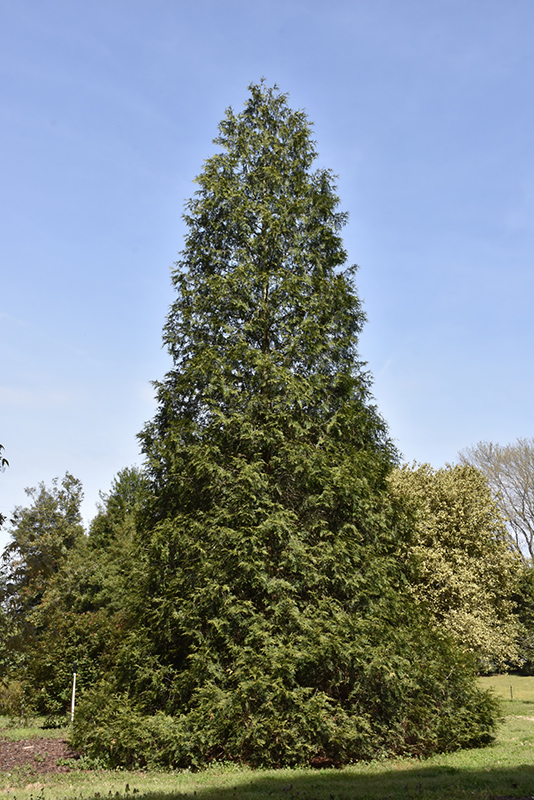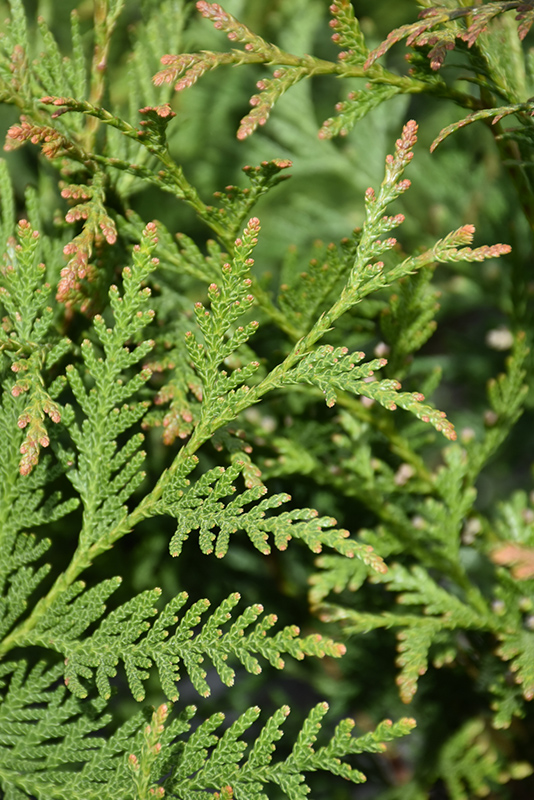Western Red Cedar, Spring Grove Thuja plicata 'Grovepli' Height: 30 feet Spread: 10 feet
Sunlight:
Hardiness Zone: 4b Other Names: Giant Arborvitae, Western Red Cedar Brand: Proven Winners Description: One of the finest tall hedging evergreens, this outstanding variety has dense sprays of shiny rich green leaves on a tightly upright form with a pinnacle top; takes pruning very well, makes an excellent hedge, both trimmed and natural Ornamental Features Western Red Cedar, Spring Grove is primarily valued in the landscape for its distinctively pyramidal habit of growth. It has forest green evergreen foliage. The glossy scale-like sprays of foliage remain forest green throughout the winter. The shaggy antique red bark adds an interesting dimension to the landscape. Landscape Attributes Western Red Cedar, Spring Grove is a dense evergreen tree with a distinctive and refined pyramidal form. Its relatively fine texture sets it apart from other landscape plants with less refined foliage. This is a relatively low maintenance tree. When pruning is necessary, it is recommended to only trim back the new growth of the current season, other than to remove any dieback. It has no significant negative characteristics. Western Red Cedar, Spring Grove is recommended for the following landscape applications; Planting & Growing Western Red Cedar, Spring Grove will grow to be about 30 feet tall at maturity, with a spread of 10 feet. It has a low canopy with a typical clearance of 2 feet from the ground, and should not be planted underneath power lines. It grows at a fast rate, and under ideal conditions can be expected to live for 70 years or more. This tree does best in full sun to partial shade. It is quite adaptable, prefering to grow in average to wet conditions, and will even tolerate some standing water. This plant should be periodically fertilized throughout the active growing season with a specially-formulated acidic fertilizer. It is not particular as to soil type or pH. It is somewhat tolerant of urban pollution. This is a selection of a native North American species, and parts of it are known to be toxic to humans and animals, so care should be exercised in planting it around children and pets. Special Attributes Evergreens need to be watered during the winter. Our desert climate especially in late winter to early spring evergreens can suffer during next growing season. An easy way to remember check for dryness on the holidays Halloween, Thanksgiving, New Year's Day, Valentines Day & Easter.![]()
![]()
![]()
![]()
![]()
![]()
![]()
![]()
![]()
![]()
![]()
![]()


